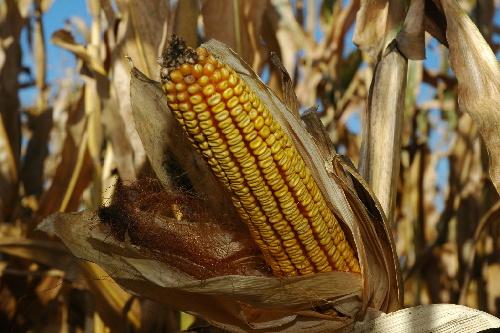Predicting Winter Weather: A Timeline Approach

Table of Contents
Early Season Outlook (Months Before Winter)
Long-range winter weather forecasting, typically issued months in advance, relies heavily on large-scale climate patterns and statistical analysis of historical data. While these predictions offer a general idea of the upcoming winter's severity, it's crucial to understand their limitations. These outlooks provide a broad brushstroke picture, not a detailed, day-by-day forecast.
- Limitations of long-range forecasts: These forecasts often come with large error margins. They provide probabilities of above or below-average temperatures and precipitation, not precise predictions of individual storms.
- Key climate indicators to watch for: The El Niño-Southern Oscillation (ENSO) is a major factor. El Niño years often bring milder winters to some regions and harsher winters to others, while La Niña can have the opposite effect. Other climate patterns and oscillations also play a role.
- Examples of past accurate/inaccurate long-range predictions: Analyzing past predictions helps assess the reliability of different forecasting models and approaches. Note that some years yield highly accurate long-range forecasts, while others have wider margins of error.
- Resources for accessing early season outlooks: Government agencies like the NOAA (National Oceanic and Atmospheric Administration) and meteorological websites such as AccuWeather and The Weather Channel provide valuable long-range winter weather forecasts.
Mid-Range Forecasting (Weeks Before Winter Storms)
As winter approaches, the accuracy of winter weather forecasting improves significantly. Medium-range models (typically predicting a week to several weeks out) become more skillful in pinpointing potential storm tracks, precipitation amounts, and temperature fluctuations. This stage leverages a technique called ensemble forecasting.
- Improved accuracy compared to long-range forecasts: Mid-range forecasts offer a more refined picture of potential winter weather events, although uncertainties still exist.
- Importance of paying attention to model consensus: Meteorologists analyze multiple model outputs to identify consistent patterns and increase prediction confidence. Agreement among different models increases the likelihood of a forecast's accuracy.
- How to interpret probabilities in weather forecasts: Probabilistic forecasts communicate uncertainty. A 70% chance of snow means there's a significant likelihood of snowfall, but it doesn't guarantee it.
- Useful resources for accessing mid-range forecasts: Many weather websites and apps provide updated medium-range forecasts, often accompanied by probability maps illustrating the likelihood of different weather scenarios.
Monitoring Key Atmospheric Indicators
Effective mid-range winter weather prediction involves close monitoring of crucial atmospheric indicators.
- Understanding high and low-pressure systems: These systems are fundamental to storm development and movement. Low-pressure systems often bring stormy weather, while high-pressure systems usually result in calmer conditions.
- The role of the jet stream in storm formation: The jet stream, a fast-flowing air current high in the atmosphere, significantly influences storm tracks and intensity. Its position and strength are key factors in winter weather forecasting.
- Importance of upper-air wind patterns: Upper-level winds help steer weather systems and influence their development. Analyzing these patterns enhances the accuracy of mid-range predictions.
Short-Term Forecasting (Days and Hours Before Winter Storms)
Short-term winter weather forecasting, covering periods from a few hours to a few days, relies on high-resolution models and real-time observations. This is where accuracy peaks.
- High accuracy of short-term forecasts: Short-term forecasts, using radar, satellite imagery, and surface observations, provide very precise information on the timing, location, and intensity of winter storms.
- Importance of monitoring radar and satellite images: These tools offer real-time views of storm development and movement, crucial for refining short-term predictions.
- Using weather apps and local news for updates: Stay informed with timely updates from reliable sources.
- Preparing for winter storms based on short-term predictions: Once a winter storm warning is issued, take appropriate measures to ensure your safety.
The Role of Technology in Winter Weather Prediction
Advancements in technology play a crucial role in enhancing the accuracy and lead times of winter weather forecasting.
- Improved resolution and accuracy of models: Supercomputers and advanced algorithms allow for higher-resolution models that capture finer-scale weather features, leading to more precise predictions.
- Wider coverage of remote areas: Improved satellite technology and data assimilation techniques expand the reach of weather forecasting to previously underserved areas.
- Enhanced visualizations of weather data: Sophisticated visualization tools make weather information more accessible and easier to interpret for the public and emergency response teams. The use of AI and machine learning is further improving model accuracy and prediction lead times.
Mastering Winter Weather Prediction: A Timeline Approach
Predicting winter weather effectively involves understanding its temporal evolution. From the broad strokes of early-season outlooks to the precise detail of short-term forecasts, each stage plays a crucial role in preparing for winter storms. Utilizing a combination of long-range, mid-range, and short-term forecasts, along with monitoring key atmospheric indicators, significantly enhances preparedness. Remember to consult multiple reliable sources and integrate information from different forecast timelines for a comprehensive understanding.
Stay ahead of winter weather with a proactive approach. Learn to utilize the timeline of winter weather prediction for enhanced safety and preparedness. [Link to NOAA website] [Link to Accuweather] [Link to another relevant resource]

Featured Posts
-
 Bayerns Six Point Bundesliga Lead A Closer Look At The St Pauli Win
Apr 25, 2025
Bayerns Six Point Bundesliga Lead A Closer Look At The St Pauli Win
Apr 25, 2025 -
 El Ascenso De Retegui Estadisticas Y Su Competitividad Por La Bota De Oro
Apr 25, 2025
El Ascenso De Retegui Estadisticas Y Su Competitividad Por La Bota De Oro
Apr 25, 2025 -
 10 Key Facts About The 2025 Los Angeles Marathon
Apr 25, 2025
10 Key Facts About The 2025 Los Angeles Marathon
Apr 25, 2025 -
 The Zuckerberg Trump Dynamic Implications For The Tech Industry
Apr 25, 2025
The Zuckerberg Trump Dynamic Implications For The Tech Industry
Apr 25, 2025 -
 March Concerts Oklahoma City Full Calendar Of Events And Ticket Sales
Apr 25, 2025
March Concerts Oklahoma City Full Calendar Of Events And Ticket Sales
Apr 25, 2025
Latest Posts
-
 Young Thug And Mariah The Scientist Snippet Reveals A Promise Of Fidelity
May 10, 2025
Young Thug And Mariah The Scientist Snippet Reveals A Promise Of Fidelity
May 10, 2025 -
 Elon Musks Financial Empire How He Built His Business Dynasty
May 10, 2025
Elon Musks Financial Empire How He Built His Business Dynasty
May 10, 2025 -
 Understanding Elon Musks Wealth Key Strategies And Investments
May 10, 2025
Understanding Elon Musks Wealth Key Strategies And Investments
May 10, 2025 -
 Post Liberation Day Assessing The Financial Losses Of Trumps Billionaire Circle
May 10, 2025
Post Liberation Day Assessing The Financial Losses Of Trumps Billionaire Circle
May 10, 2025 -
 The Economic Impact Of Liberation Day Tariffs On Trumps Billionaire Network
May 10, 2025
The Economic Impact Of Liberation Day Tariffs On Trumps Billionaire Network
May 10, 2025
